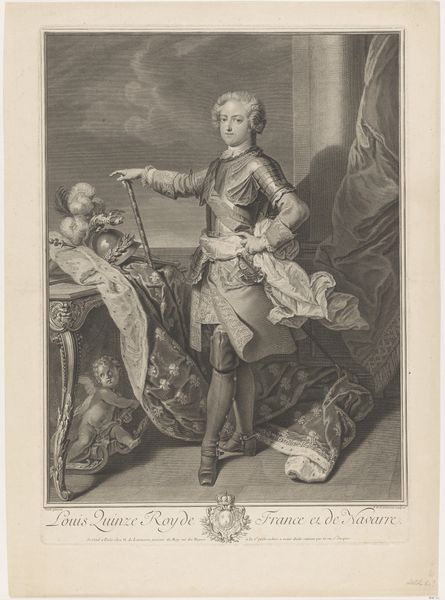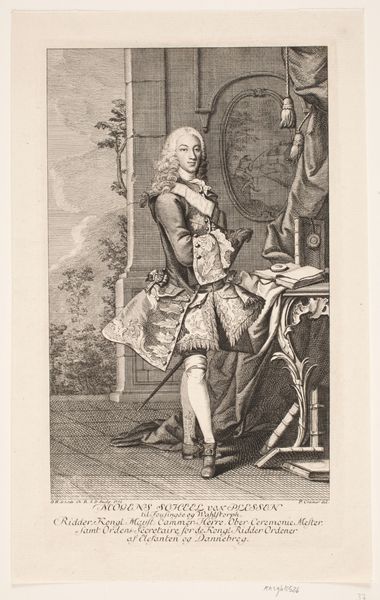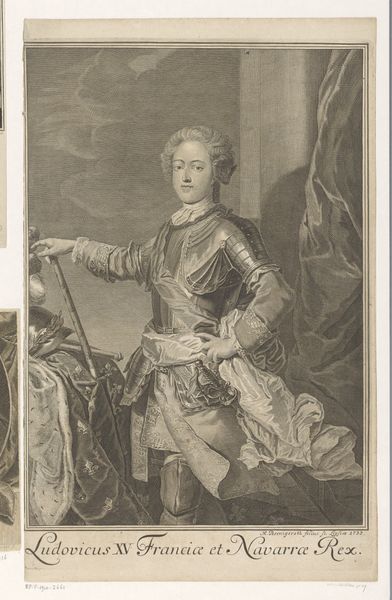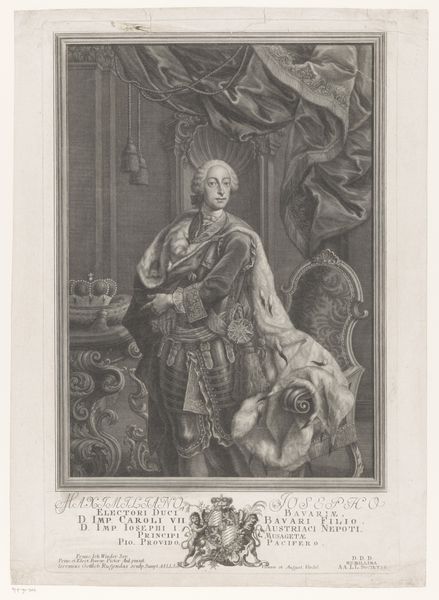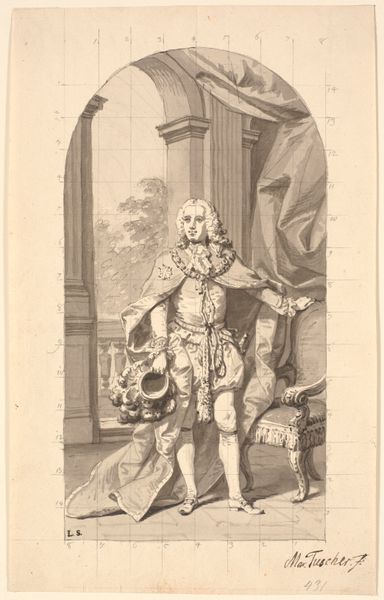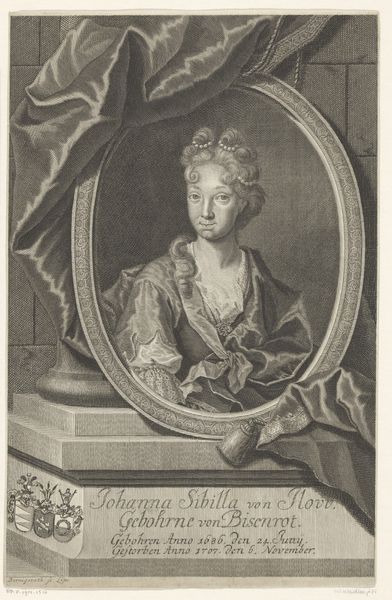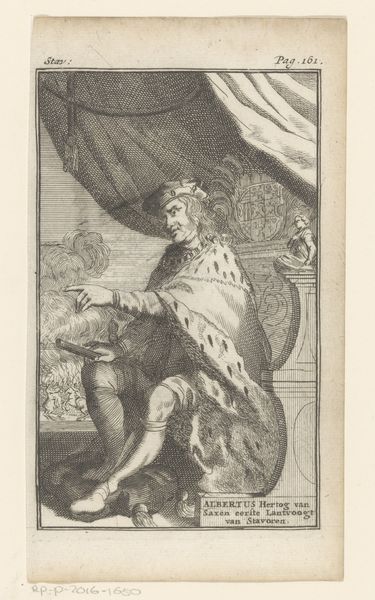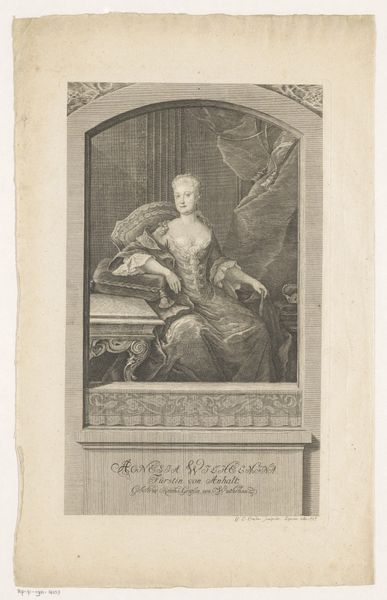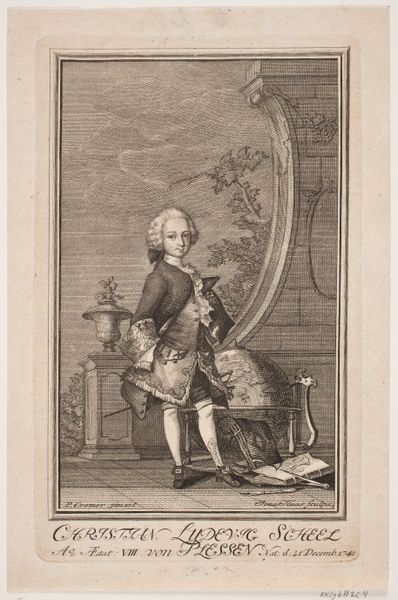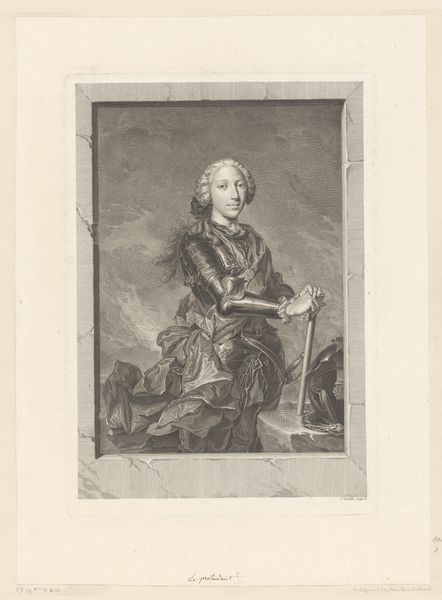
Dimensions: height 315 mm, width 215 mm
Copyright: Rijks Museum: Open Domain
Editor: So, this is a print titled "Portret van Lodewijk XV van Frankrijk," dating from 1776 to 1787, found here at the Rijksmuseum. It's an engraving of Louis XV, and honestly, the detail achieved with just lines is what really strikes me. What is your take on it? Curator: Well, for me, it begins with recognizing this as an *engraving*. It is all about *production*: the engraver, likely contracted, is acting as a skilled laborer replicating an image. What was the process of distribution of prints like at the time? Did the process of reproducing imagery this way give it more reach or make it less valuable than, say, a painted portrait? Consider who could afford to commission and then disseminate prints like this of themselves, and why? Editor: That's an interesting perspective I hadn't considered. It almost makes it feel less about Louis XV himself and more about the systems in place to represent power at that time. Curator: Precisely! It's a commodity, right? Each line meticulously carved is labor materialized, consumed by a market eager for images of power. How does that influence your perception of Louis XV? Editor: It definitely humanizes it a bit, thinking of all the people involved in making the image circulate. It wasn't just *him* being powerful, but all these artisans too. It speaks to power through industry, maybe. Curator: And considering the historical context, what impact would this "industrial" availability have just before the French Revolution? We can start to really dig into that if we think about materials. Editor: I see what you mean, by thinking through materiality, process, and cultural context it helps reveal a fuller understanding of the art as something other than an untouchable icon!
Comments
No comments
Be the first to comment and join the conversation on the ultimate creative platform.
